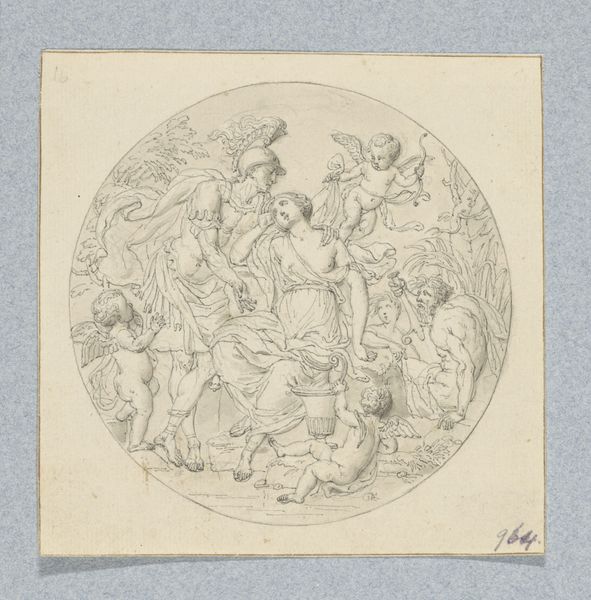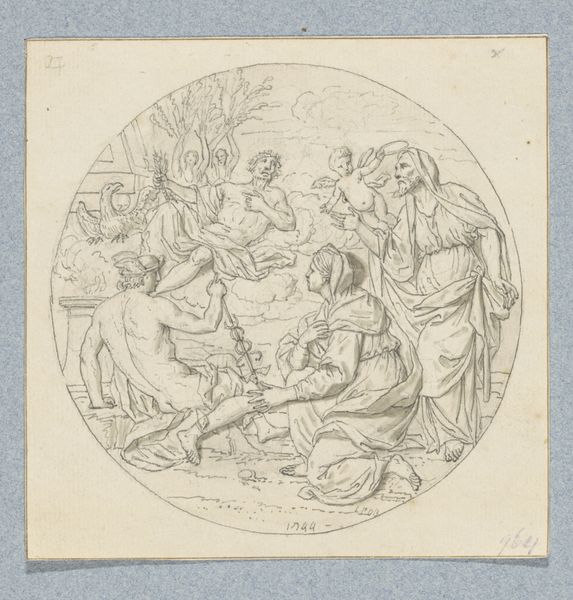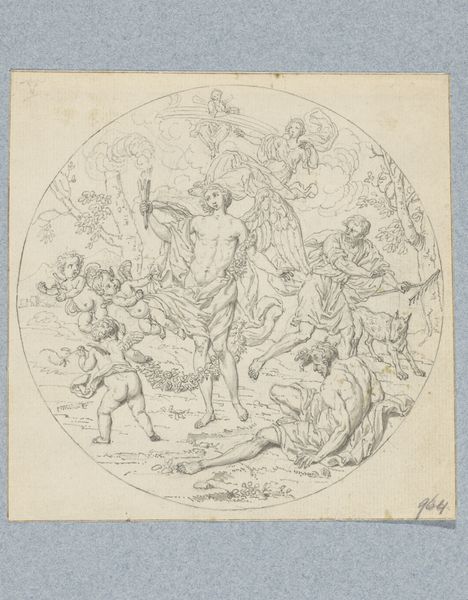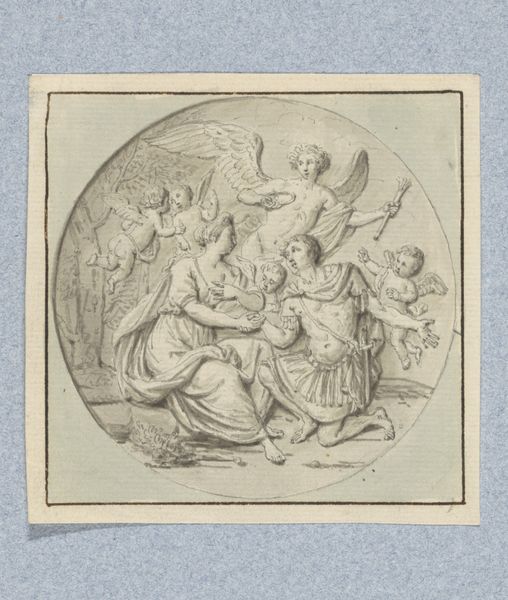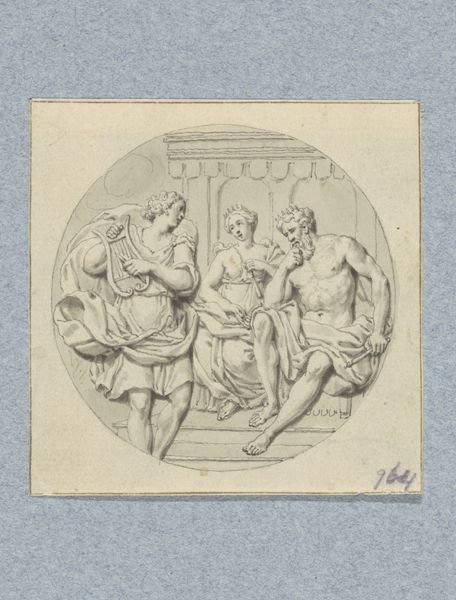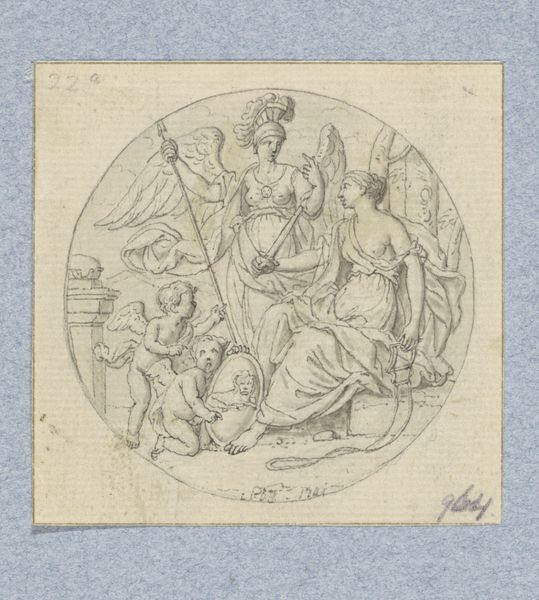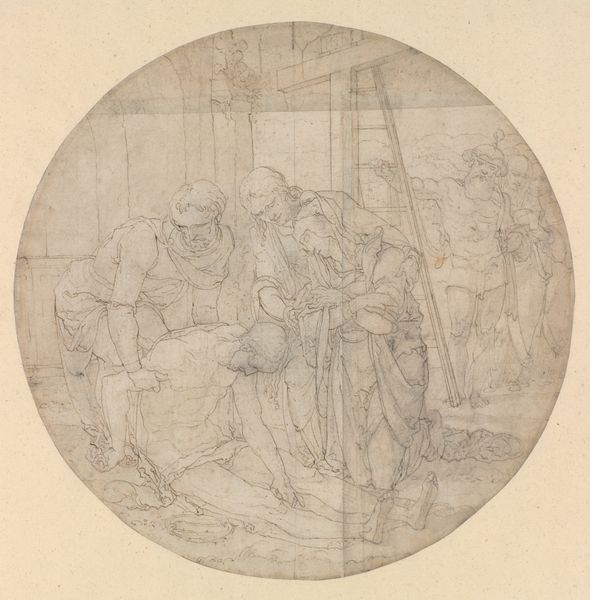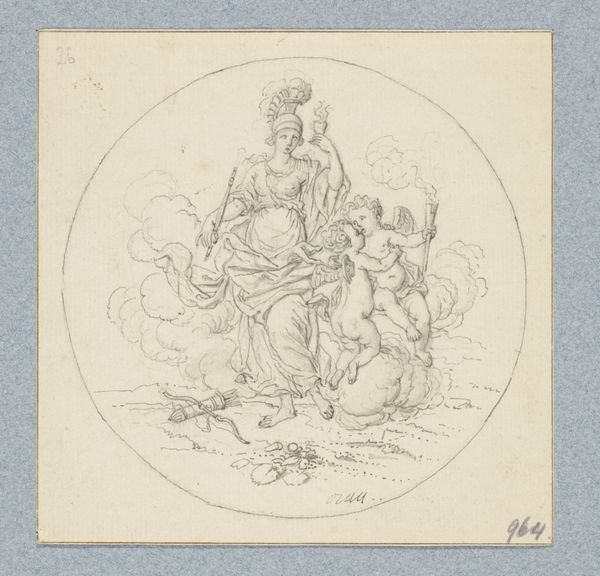
De dood van Julius Cesar (in doos met 43 tekeningen) 1703 - 1775
0:00
0:00
drawing, paper, pencil, pen
#
drawing
#
aged paper
#
toned paper
#
paper non-digital material
#
ink paper printed
#
sketch book
#
figuration
#
paper
#
personal sketchbook
#
group-portraits
#
pencil
#
pen and pencil
#
sketchbook drawing
#
pen
#
history-painting
#
storyboard and sketchbook work
#
academic-art
#
italian-renaissance
#
sketchbook art
Dimensions: height 129 mm, width 130 mm
Copyright: Rijks Museum: Open Domain
Editor: We’re looking at "The Death of Julius Caesar" by Louis Fabritius Dubourg, likely made sometime between 1703 and 1775. It’s a drawing on paper using pen, pencil, and ink, currently held at the Rijksmuseum. The circular composition really grabs me – what’s your take? Curator: Indeed. Immediately striking is the dynamism within this circular frame. Consider the interplay of lines – the hatching creating volume, particularly on the figures, contrasts with the looser, sketchier lines of the background elements. Notice the concentration of dark values around Caesar himself; a strategic use of chiaroscuro directs the eye to the pivotal moment of the assassination. How does this distribution of light and dark contribute to the overall reading of the scene, in your opinion? Editor: I see what you mean. The high contrast around Caesar definitely emphasizes the violence. It almost feels like the rest of the scene is secondary, fading into the background. Do you think that relates to the subject matter? Curator: Undeniably. The artist employs a compositional strategy prioritizing clarity. The circle inherently limits the scene, pushing figures towards the viewer and magnifying the emotional intensity. Observe also how Dubourg uses varied textures, contrasting smoother surfaces of the bodies against the textured garments. Does this tactile rendering heighten the emotional drama or provide structural stability within the pictorial space? Editor: That makes me think about the figure at the top. The angel? It’s rendered so much lighter and feels less defined than the figures below. Curator: Precisely! The ethereal rendering sets it apart. One could argue it provides a formal counterbalance and functions as a commentary, contrasting mortal drama below with ethereal justice. Editor: That's a helpful insight. I hadn't thought of the composition as a commentary. Curator: By analyzing such elements as line, form, and distribution of values, we arrive at a richer understanding of Dubourg's narrative intentions. This formal analysis enables a potent engagement with the image beyond simple representation. Editor: It’s amazing how much can be interpreted just by looking closely at the artist’s techniques. I’ll definitely look at composition differently now.
Comments
No comments
Be the first to comment and join the conversation on the ultimate creative platform.
